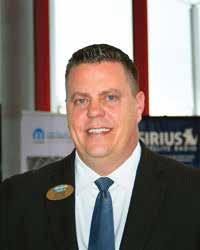DENTON COUNTY

Your Investment Advisor’s
Dirty Secret Benefits of Getting Chiropractic Adjustments

DENTON COUNTY

Your Investment Advisor’s
Dirty Secret Benefits of Getting Chiropractic Adjustments

Texas Health Flower Mound Weight Loss Center o ers comprehensive weight loss programs complete with diagnostic, surgical and non-surgical options designed to promote a full and healthy life.
Our bariatric team consists of board certified bariatric surgeons, experienced bariatric practitioners, nurses, dietitians and coordinators.
A dedicated weight loss specialist will be with you each step of your experience - from your initial appointment, through diagnosis, treatment, after care and follow-up maintenance appointments.
For more information or to schedule a consultation, please call 469-322-7073 or visit the Center’s website at TexasHealthFlowerMound.com/weight-loss-center

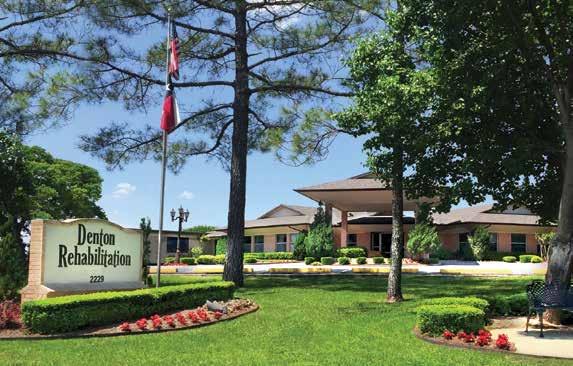



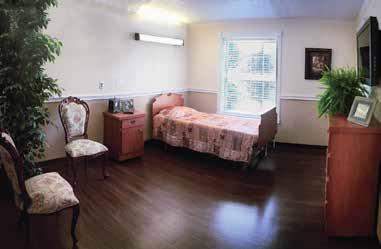


Voted Top Doc in Dallas County and Collin County. Dr. Toulson is proud to serve local residents and surrounding communities.
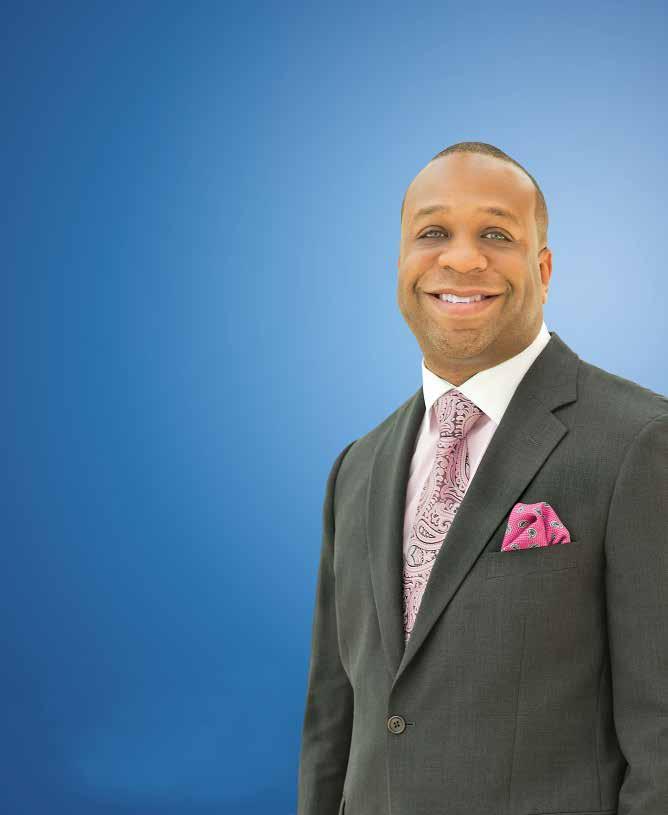
Total
Total Knee Replacement
Partial Knee Replacement
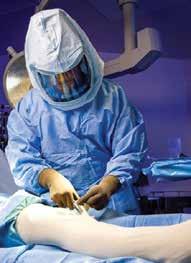


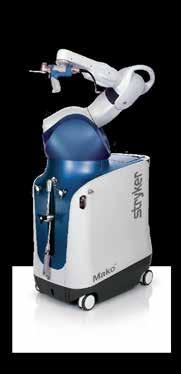
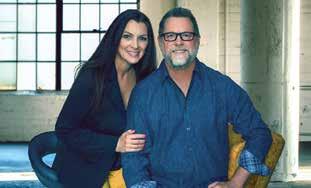
Supermodel Heidi Klum believes the entertainment world maxim that it’s a rapid downhill slide for women after 30. At 46, the Germanborn Klum is more vibrant than ever. Not only is she branching out into fresh markets and taking on dynamic projects as she matures, Klum is a glowing newlywed to a man 16 years her junior.
Tackling ageism and sexism with grace are just two of the things that come naturally to this business-minded beauty. In response to the fiercely fickle and uber competitive entertainment industry, Klum has the foresight to continually pursue multiple creative and business goals to diversify her trademark brand of beauty and brains.
We catch up with the flaxen-haired beauty in this month’s celebrity spotlight to learn more about Klum’s wanderlust for global travel and passion for philanthropic endeavors. We also get an inside look at Klum’s new Amazon show, Making the Cut, and get the dish on Tom Kaulitz, her much-younger hubby––a man she says is making her the happiest she’s ever been.
Switching gears, we take a peek into investment advisers’ dirty secret. Financial consultant Rick Ferri, CFA, the CEO of Ferri Investment Solutions, pulls back the curtain on the financial adviser industry and explains why it’s far more complicated and costly than it needs to be. He suggests simple may be better when it comes to your portfolio––read why in his article.
Speaking of simple, that word is rarely associated with bodily pain––and for good reason. As Dr. Brent Wells explains in his article, “The Benefits of Getting a Chiropractic Adjustment,” many times the root of certain pain in the body stems from the spine being misaligned or out of balance. It’s Dr. Wells’ job to locate issues beneath the surface of the skin and bones that other specialists and doctors are often unable to do. You won’t want to miss his educational article on chiropractic care.
With that in mind, simply dive in and get reading for a host of informative and entertaining content.
Cheers,
Sam and Spring Houston
PRESIDENT & CEO
Sam Houston
VICE PRESIDENT & CFO
Spring Houston
FEATURE WRITER, COPY EDITOR & SOCIAL MEDIA DIRECTOR
Sondra Barr
ART DIRECTOR, LAYOUT, PRODUCTION & WEBSITE DESIGN
Lewis Schucart
ADMINISTRATION & ACCOUNTS MANAGEMENT
Jennifer Beavers
ADVERTISING/SALES
Texas | Denton County, Dallas County, Collin County
Texas & Oklahoma | Texoma
WRITE TO US. Tell us who you would like to see featured on the cover, or what subjects you would like covered in upcoming editions of LIVING WELL Magazine at spring@livingwellmag.com
SUBSCRIPTIONS/CUSTOMER INQUIRIES
Houstons of Dallas Publishing, Inc. 102 E. Broadway, #901 Prosper, TX 75078
www.LivingWellmag.com
Phone: 214-507-1000 Fax: 855-248-2132
LIVING WELL Magazine is a source for quality educational articles on living a healthy, vibrant life. Our focus is on connecting our readers with the latest information on a host of topics relevant to their evolving life. From cutting edge medical news and procedures to top-tier financial, legal and lifestyle information. Connecting readers to leading medical and business professionals in their community in Texas and Oklahoma.
‘LIKE US' FACEBOOK.COM/LIVINGWELLMAG
'FOLLOW US' @LIVINGWELLMAGS
All advertisements in this Magazine are placed by third parties. We do not control or endorse either the advertisements or their content. Further, we do not manufacture, sell, distribute or provide any of the goods or services advertised herein. We hereby expressly disclaim any liability with respect to the information or goods and services contained herein. We further disclaim any and all warranties or representations, express or implied, with respect to such information, goods or services, including any warranty of merchantability or fitness for a particular purpose (it being understood that we do not acknowledge that any such warranty exists). We are not liable or responsible for any loss, injury, damage, or harm that you may suffer as a result of the information contained in any advertisement or goods or services contained herein. “We” refers to the name of this Magazine, and all versions of Living Well Magazine, Senior Magazine, as well as Houstons of Dallas Publishing, Inc.

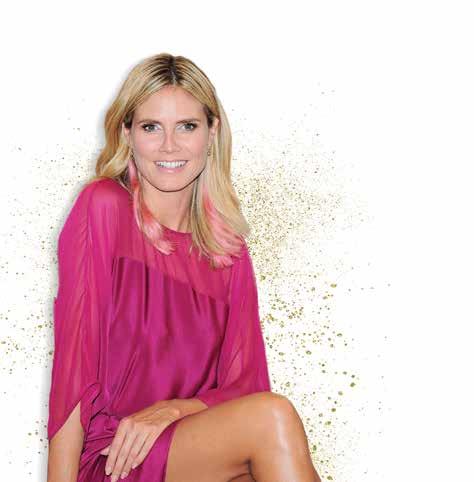



• Onsite Diabetic Shoe Store with Dynamic Arc Balance Assessment to help pinpoint the speci c area(s) of functional balance lost.
• Onsite Nail Treatment Center with full spa services and open to the public.
• We have podiatric specialists that treat chronic pain and peripheral nerve problems that a ect the foot and ankle.
• MLS Laser Therapy for pain and in ammation and the Hyperion 1530 laser for treatment of fungal nails.
Achilles Tendon
Ankle Instability
Ankle Sprains
Foot and Ankle Injuries
Arthritic Foot & Ankle Care
Athletes Foot
Bunions
Calluses

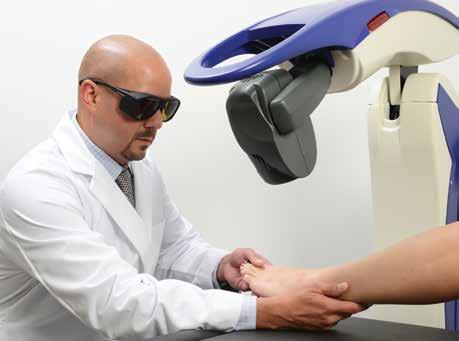
Children’s Feet Corns
Crush Injuries
Diabetic Foot Care
Flat Feet
Fungal Toenails
Geriatric Foot Care
Hammertoes
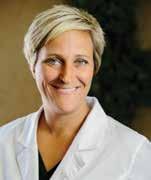
Heel Spurs
Ingrown Toenails
Injuries
Neuroma
Plantar Fasciitis
Warts
Wounds
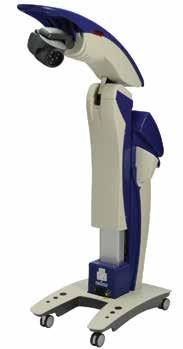

Many of the estimated 70 million obese Americans are trapped in a life-threatening vicious cycle: Obesity aggravates foot problems, like heel pain and flat feet; sore feet make it hard to exercise and lose weight; and without exercise, obesity worsens and exacerbates progression of diabetes, heart disease and other serious health threats. I urge obese adults to seek immediate treatment for chronic, activity-limiting foot and ankle problems to foster compliance with physician-directed exercise programs.
It is unfortunate that obese adults get caught up in the vicious cycle of avoiding physical activity due to foot or ankle pain, thereby permitting cardiovascular disease and other life-threatening conditions to worsen as a result. For example, in many cases, chronic heel pain occurs from carrying too much weight. Left untreated, it becomes an impediment to physical activity and meaningful weight loss.
There’s no reason foot or ankle pain should stop obese patients from exercising. The first step toward breaking that vicious cycle is an evaluation by a foot and ankle surgeon.
According to the ACFAS consumer Web site, FootHealthFacts.org, many causes of foot pain can be relieved without surgery through stretching exercises, orthotics and athletic shoes with good shock absorption and support. If a bunion, heel pain or other condition requires surgery, patients can participate during their recovery in non-weight-bearing activities, such as riding a stationary bike, swimming or weight training.
By Damien Dauphinée, MDOnce cleared by your physician to begin exercising, don’t try to do too much too soon. Follow a gradual routine until your body adjusts to the stress of regular physical activity. For example, I counsel overweight patients to avoid working out on treadmills or elliptical machines to minimize pounding and stress on their joints.
Shedding excess pounds helps diabetic patients control their disease, but many who experience foot ulcerations

and vascular problems caused by diabetes might think they shouldn’t exercise.
For those moderately to severely overweight, a thorough physical examination is mandatory before beginning an exercise program.

Every diabetes patient needs regular foot exams to check for possible sore spots and assess nerve sensation. With proper diabetic foot care and the right footwear, most patients can follow an exercise regimen that is safe and appropriate for them.
For more information about ankle fractures and sprains or other foot and ankle problems, contact Dr. Damien Dauphinée’s office at 940-300-3054, or go to www.completefootandanklecare.com.
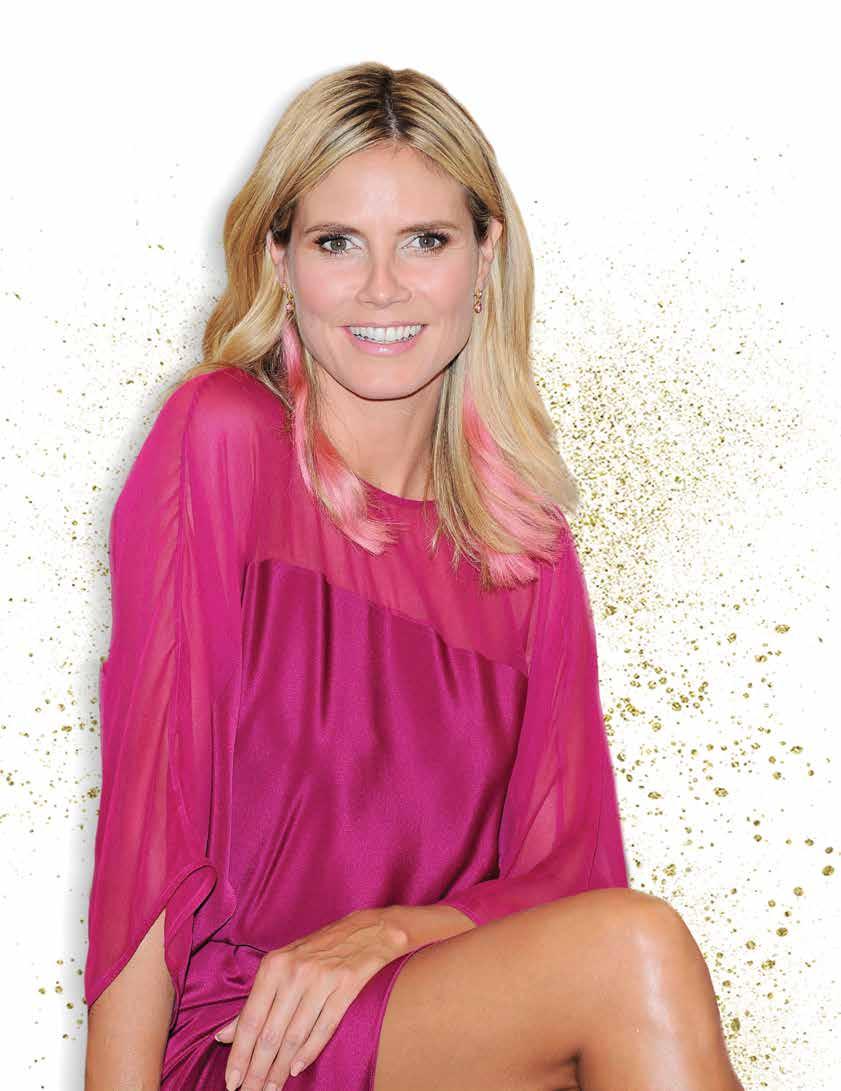


Heidi Klum makes the cut beyond “Project Runway.”
They say that German engineering is as close to perfection as you can get. No, we aren’t talking about a Mercedes or a BMW; we’re talking about German-born Heidi Klum, who has been rated one of the sexiest models in the world. For crying out loud, she even had her legs insured for $2.2 million dollars, and that was 20 years ago! German engineering indeed!
Much like the Mercedes Benz, the stunning and multi-talented entertainer, model, mother, and all-around superstar, Klum, has been a household name for generations. She’s been in the limelight since she won a modeling contest in her home country of Germany at 18, and has sustained global recognition well into her 40s. Now 46 years old, many wonder how she continues to maintain her superstardom. The answer––by keeping things fresh, branching out into new markets, different art forms, and always being the hardest worker in the room.
Klum is an archetype of physical perfection, a flaxen-haired blonde goddess with as much brains as beauty, a beloved role model for business-minded creatives, a wryly humorous German-American exotic personality, and an all-around loveable force to be reckoned with.
She is a woman of many talents and even more life interests: A former Project Runway presenter, a talent show judge, and a philanthropist––in addition to being a model, actor, singer, and a carefree, body-positive nudist. (Rumor has it that she enjoys brushing her teeth topless!)
At an age where the entertainment industry often chews up mature women and spits them out, Klum has continually raked in the money and the fans without any slowdown in sight. She still makes headlines several times a year, for various projects.
Sure, she’s been a Victoria’s Secret Model and graced the cover of Sports Illustrated’s Swimsuit Edition, but

she’s also a perennial Halloween favorite, conjuring up costumes that would make creature feature artist Rick Baker jealous. She’s undergone hours of prosthetic makeup for Halloween to transform herself into fun and imaginative monsters and aliens, rendering her unrecognizable as the supermodel underneath. Sometimes beauty is a bit more than skin deep.
Despite being gorgeous, hip, and fashionable, Klum doesn’t claim to always be at the apex of haute couture. She admitted to USA Today that she’s often “The worst dressed” when in public, and doesn’t mind. Fans agree Klum’s willingness to be casual and her generally laidback demeanor makes her more relatable.
Hollywood and the entertainment industry are fiercely competitive and fans can be fickle and forgetful of the greatest talents. To compensate for the vagaries of Hollywood, Klum has always pursued multiple creative and business goals to cultivate a diversified and interesting career, everything from writing to acting to producing.
What current projects does she have in the works? Well, in a recent interview with Variety, Klum dished about her newest project, and how it came to be. Following a wildly-successful ride of 16 years producing and hosting Project Runway, Klum and Tim Gunn decided to graduate to the next level, creating a new hit show called Making the Cut. As they discussed with Variety, “Project Runway is the undergraduate program, Making the Cut is the graduate and PHD program.” This new fashion competition reality program on Netflix speaks not only to Klum’s competitive nature for self-improvement, but also a realiza-
Continued, page 10
Continued from page 9
tion that more could be done with a new show on a new network.
Being a semi-retired model still requires a great deal of dedication and focus on her physical wellbeing. Klum takes a balanced approach that allows her to eat reasonably well, and doesn’t kill herself working out every day of the week.
For the most part, she relies on cardio like running, a bit of weight training and then yoga as her stretching and resistance regimen (which helps her keep her impressive abs and core looking like a 20-year-old’s). She’s also been known to jump on trampolines and dabble in circuit training to keep her heart rate up. Klum’s motto is that working out is easier with an accountability partner. Gym partners are friends and motivators in one. “My best advice,” Klum dished to Glamour, “is to workout with a buddy. They keep you motivated and get you out of bed.”
Klum admittedly eats a generous amount of food, but she eats nutritious foods that help fill her up (fruits and veggies for fiber), eggs and skinless chicken for protein, and watches her portions around dinnertime, careful not to eat too much before bed, as she explained to US Weekly
As far as her personal life, Heidi has been thrice married, famously to the pop singer Seal, with whom she had children, and most recently to musician
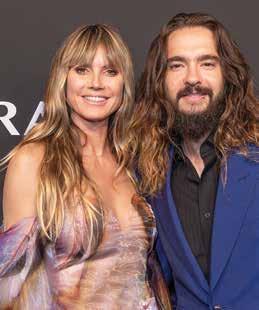
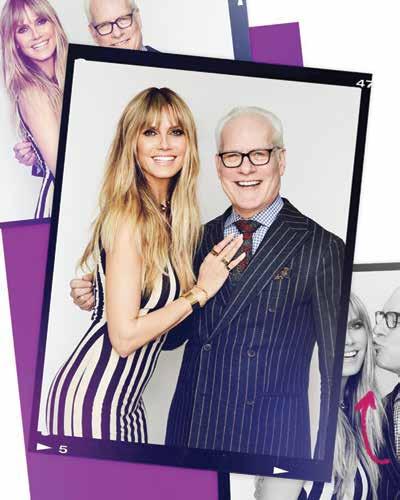
Tom Kaulitz. He is a guitarist, singer-songwriter and keyboard player in the bestselling rock band Tokio Hotel. He also just happens to be 16 years her junior! But while double standards may raise eyebrows for these age gaps among women who are the senior partner, Klum doesn’t sweat the questioning looks.
The couple hardly seems to care about the age difference; but the public, especially in Hollywood, can be shallow.
“Lately, I’m being reminded more about my age by people other than myself,” Klum recently explained to InStyle. “My boyfriend is many years younger than me, but I don’t see the big deal.”
When asked about her recent nuptials, Klum told USA Today, “So far, so good!” Which would hardly count as a ringing endorsement, save for the fact that she was ribbing us with a coy smile and her trademark sense of humor.
Klum and Kaulitz get along famously, for several reasons. Both are German natives and, on top of that, they both have been married before. Not to mention, they are both multifaceted entertainers with a pas-
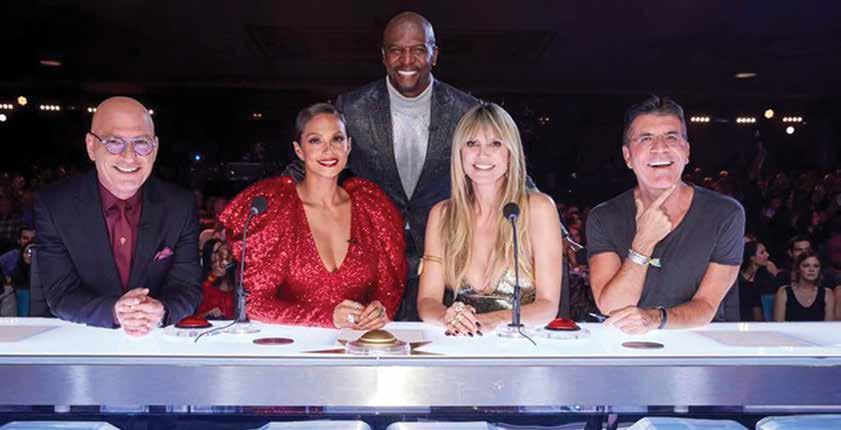
sionate love for life and wanderlust for global travel. Kaulitz has grown very fond and paternal of Klum’s children, as she has expressed in multiple interviews.
Amusingly enough, she had not listened to her husband’s music prior to marrying him. They, in fact, met through a mutual friend, Kaulitz’s twin brother. She had met Tom’s brother years ago, without knowing that she’d eventually fall in love and marry into the family. She is, however, a current fan and cheerleader for her husband’s successful band.
Klum is also a noted philanthropist, giving generously to multiple causes and charities over the years, even lending her star power to fundraisers along with her dollars. In 2014, she was even given the honor of receiving the Crystal Cross Award, a rare tribute to the generosity of donors like Klum. She received special recognition for her contributions and advocacy for the Red Cross after Hurricane Sandy ravaged the East Coast, as first reported in The Telegram.
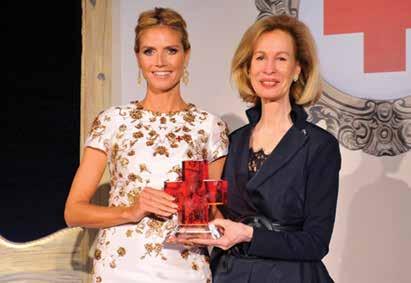
“I think everyone can do something, even if it is in your own community,” Klum explained. “You can visit children in the hospital or bring gifts to them, cook a meal for someone who is ill and can’t. We are all global citizens and whatever we can do, if it is small or something bigger––it’s all important.”
Klum has more plans on the horizon, both creatively and philanthropically, which we would expect from someone as busy as this beloved entertainment mogul. Stay tuned for what’s next!

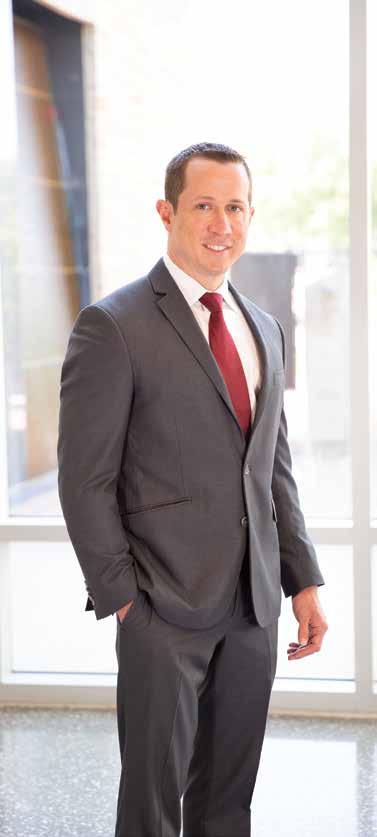
Dr. Chambers is an orthopaedic surgeon at Dallas Orthopaedic Joint Institute who specializes in joint replacement surgery. He received extensive training in joint replacement surgery during his fellowship at Harvard Medical School / Massachusetts General Hospital, which was voted as the top hospital in the United States. Dr. Chambers has implemented the techniques learned at Harvard Medical School into his own practice and offers minimally invasive total hip / knee replacement, partial knee replacement, revision surgery for malfunctioning, loose, and infected joint replacements, arthroscopic surgery of the hip and knee, and revision of failed and recalled metal-on-metal total hip replacement implants. Dr. Chambers focuses special attention on surgical techniques for rapid recovery after total joint replacement which allow his patients a more predictable and earlier return to home and an active lifestyle.
Dr. Chambers is pleased to offer the MAKOplasty Robotic-Arm Assisted partial/total knee and hip replacement. The MAKOplasty procedure is changing the way joint replacement surgeries are performed by providing each patient with a personalized surgical experience based on their specific diagnosis and unique anatomy using a CT-based 3D modeling. The robotic arm technology allows for extremely precise placement of hip/knee components with potentially less soft tissue injury than traditional joint replacement.
Dr. Chambers is a Texas native and grew up in Houston, Texas. He attended medical school at The University of Texas Medical Branch in Galveston, and completed residency at John Peter Smith Hospital in Fort Worth, Texas. He then completed a fellowship in joint replacement surgery at Harvard Medical School. In his free time, Dr. Chambers enjoys traveling with his wife, Christine, and spending time with friends and family. He is an avid sailor and enjoys participating in sailing races on the local lakes in the Dallas/Fort Worth area.
Dr. Chambers practices at Methodist Dallas, Charlton, and Richardson Hospitals. To schedule an appointment please call 469-747-0382
221 W. Colorado Blvd., Pav II, Suite 431 Dallas, Texas 75208

3430 W Wheatland Rd., POB 1, Suite 216 Dallas, Texas 75237







Horses were domesticated about 5,000 years ago. That’s a long time. They have been used in all areas of life from travel, ranch and farm work to leisure and sporting events.
Much has been learned about these majestic animals. They are a “herd” animal, as opposed to a “pack” animal like dogs or coyotes. Because they are a herd animal, they have a basic instinct to protect the other horses in the group and they travel in their group. When they are threatened by a predator or detect harm, they will surround and defend the horse(s) that are in danger. They also will draw the attention away from the herd to themselves in order to protect the others.
large so they can detect smells from far away.
EQUINE THERAPY IS ALSO USEFUL FOR TRAUMA (WITH OUR WAR VETERANS OR THOSE WHO HAVE SUFFERED ABUSE AND GRIEF) AND
From these basic caring instincts of staying together to defend at all cost, we know horses feel deeply and have a strong sense of their surroundings. They are more aware of their surroundings than humans and can see and hear in all directions. Their ears can move front, side, and to the back of them for acute hearing. Their eyes are positioned on the side of their faces so they can see all around them. Their noses are large and nostrils
The physic of a horse and the way they interact in their surroundings tells us they are extremely sensitive to everything and anyone around them. This is why they have gained popularity in being used for healing of trauma and other emotional issues in the world of psychotherapy–– Equine Assisted Psychotherapy (EAP). Horses feel the emotions of people and some horses absorb the same emotion. They have an intuitive sense about them that is stronger than most humans. They remember expressions on the face of people. They are highly sensitive to the touch of a human. Many horses will observe the emotion of a person who interacts with them. Emotions such as rejection, betrayal, fear, anxiety, depression, grief, joy, gladness, and peace are examples of what they feel.
Equine therapy is also useful for trauma (with our war veterans or those who have suffered abuse and grief) and working through extreme fear. Leadership and team building for businesses or groups is also another way a horse is

used today. This kind of use of horses is called Equine Assisted Learning (EAL) and many times a licensed therapist is present along with the EAL coach to help the process when emotions surface that need professional attention.
I have used my horses for equine psychotherapy in conjunction with traditional therapy for the last two years at my ranch in Petty, Texas. I have experienced first hand the emotional healing and breakthrough that comes through these majestic, sensitive animals. I have worked with a family of a single parent, and person with high anxiety, and another person who experienced extreme grief for years from the loss of a loved one. These are only a few examples. All situations came away with success and healing from the experience they had with my horses.
There are many places in surrounding areas that provide equine psychotherapy. My husband and I work together providing Equine Assisted Learning for groups and businesses as well. Equine Assisted Psychotherapy is also extremely useful with special needs children and has proven successful.


I hope you have found this article insightful and helpful. Even though horses are majestic and usually much larger than us, we don’t need to be afraid of them. We do need to have a respect for their large bodies and be aware of healthy boundaries when working with them and wear the proper shoes. Working with horses will also give you an increased awareness for the environment around you. Spending time with a horse or a group of horses will help you overcome your fears and encourage confidence. This happens when you realize the horse is there to help you in whatever emotion you may be feeling. Spending time with this incredible animal will teach you more than what this article can convey in just a few words!

Georgia Smith-Lyle, MA, LPC-S is in private practice as a Licensed Professional Counselor in the state of Texas providing counseling for children, adolescents, adults, marriage and family. She has authored two books and is a public speaker. Georgia may be reached at 469-855-0256 or via email gpsmith7@aol.com. www.counselingbygeorgia.com

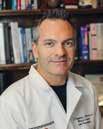
Owner
Damien Dauphinée, DPM, FACFAS, FAENS,FACCWS, CWS-P
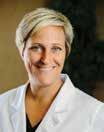
Owner
Lesley RicheySmith, DPM, FACFAS

Co-Founder and Owner
Katina Butler

LOOKING FOR THE CURE IN YOUR PEDI?
VISIT THE NAIL TREATMENT CENTER FOR THE HIGHEST STANDARDS IN SPA CARE.
Founded by board certified podiatrists in 2014, The Nail Treatment Center has served podiatry patients and the Greater Denton community by holding to 3 core values: EXPERTISE PAMPERING

To be our clients’ best possible resource for foot and nail care products and services.
To provide a luxurious experience, marked by relaxation and quality service.
To offer the peace-of-mind that comes from high medical standards for safety & cleanliness.
We are a full-service nail spa with a comprehensive menu to meet your needs. Our pedicures range from basic to specialty custom focus on fungus/ dermatitis, calluses, severe dryness, and other issues. We also offer manicures, diabetic nail trimmings, nail art, locally made organic products, safer alternatives for stronger or acrylic nails (Gel, KeryFlex, NexGen, SNS), and much more.
MON-THURS 8AM-5PM FRI 8AM-2PM SAT Call Office for Hours
3319 UNICORN LAKE BLVD, STE 111 DENTON, TX | 940-300-3054
CompleteFootAndAnkleCare.com nailspa@CompleteFootAndAnkleCare.com
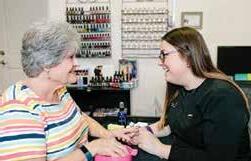



Some experiences are even better when shared! Double book your appointment for “we time” with a friend, child or special someone for well-deserved pampering, complete with a featured complimentary service. We accommodate appointment requests outside of normal business hours based on availability. Call us for more information.
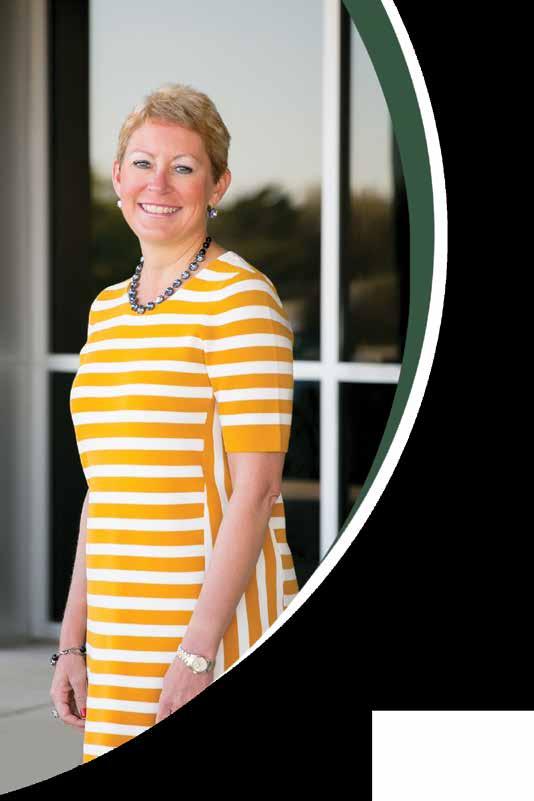
Follow us:



Sta ed by 2 Licensed, Doctors of Audiology
Hearing Aid Fittings, Maintenance and Repairs
Wireless/Connectivity Hearing Solutions
• Invisible Fittings/Open Fittings
Evaluation Period On All Hearing Aids
Hearing Evaluations For All Ages
Battery Purchase Programs
Custom Ear Protection
Assistive Devices
30 Years of Experience
“Hearing Services of Mckinney is my #1 place to go for my hearing loss needs. Caring and dedicated professionals with many years of experience working daily to meet your needs” . – Terry G. Box, Retired Collin County Sheri
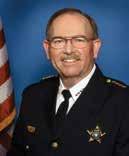


When you need top quality parts and service, look to Plano Power Equipment.
To keep your equipment in top shape, you can count on Plano Power Equipment’s retail parts sales and servicing of Toro-brand equipment using genuine Toro® parts.
When you need top quality parts and service, look to Plano Power Equipment. To keep your equipment in top shape, you can count on Plano Power Equipment’s retail parts sales and servicing of Toro-brand equipment using genuine Toro® parts.
N. Central Expy. Plano, TX 75074 (972) 423-5220

AND LIGHTWEIGHT AGILITY!
POWERFUL PERFORMANCE AND LIGHTWEIGHT AGILITY!
21” Personal Pace® Honda Engine Super Recycler® Mower (20382)
21” Personal Pace® Honda Engine Super Recycler® Mower (20382)
• Personal Pace® self-propel automatically adjusts to your walk speed.
• Personal Pace® self-propel automatically adjusts to your walk speed.
• Powered with a Honda® GCV 160cc OHC engine.
• Powered with a Honda® GCV 160cc OHC engine.
• Covered by a 5-Year Guarantee-to-Start engine warranty plus a 5-Year Full Coverage Warranty.
• Covered by a 5-Year Guarantee-to-Start engine warranty plus a 5-Year Full Coverage Warranty.
• Quick Stow Storage Handle allows you to store your mower in tight spaces.
• Quick Stow Storage Handle allows you to store your mower in tight spaces.
30” Personal Pace® TimeMaster® Mower (21199)
30” Personal Pace® TimeMaster® Mower (21199)
• Time Saver – Finish jobs faster with the 30” deck.
• Time Saver – Finish jobs faster with the 30” deck.
• No Restarts! Leave the mower without restarts with Spin-Stop™ Blade Stop. Pick Your Pace–You control the mowing speed with Personal Pace®.
• No Restarts! Leave the mower without restarts with Spin-Stop™ Blade Stop. Pick Your Pace–You control the mowing speed with Personal Pace®.
• Big Power – You’ll enjoy great power and performance from 10.00 ft.-lb. Gross Torque Briggs & Stratton® 223cc OHV engine.
• Big Power – You’ll enjoy great power and performance from 10.00 ft.-lb. Gross Torque Briggs & Stratton® 223cc OHV engine.

GET THE JOB DONE FASTER AND START YOUR WEEKEND!
MOW LIKE THE PROS! EXPERIENCE THE RESIDENTIAL ZERO-TURN RIDING MOWER WITH COMMERCIAL MOWER FEATURES.
MOW LIKE THE PROS! EXPERIENCE THE RESIDENTIAL ZERO-TURN RIDING MOWER WITH COMMERCIAL MOWER FEATURES.
50” TimeCutter® MX5000 (74773)
50” TimeCutter® MX5000 (74773)

• Mow around obstacles easily with zero-turn radius steering and dependable dual hydrostatus transmissions.
• Mow around obstacles easily with zero-turn radius steering and dependable dual hydrostatus transmissions.
• Enjoy a smoother ride with Toro’s long-lasting durable, heavy-duty 10-guage steel frame, commercial style front axle and heavy-duty front caster forks with wide front tires.
• Enjoy a smoother ride with Toro’s long-lasting durable, heavy-duty 10-guage steel frame, commercial style front axle and heavy-duty front caster forks with wide front tires.
• Pro Performance 24 HP Kohler V-Twin 725cc engine with Pro-Series air cleaner.
• Pro Performance 24 HP Kohler V-Twin 725cc engine with Pro-Series air cleaner.
• 50” heavy-duty fabricated deck featuring Toro’s tough IronForged™ cutting system that dominates challenging cutting conditions – 3-bladed mowing system and durable 6” commercial inspired spindles, driven by belts made of Kevlar®, the same material found in bullet proof vests.
• 50” heavy-duty fabricated deck featuring Toro’s tough IronForged™ cutting system that dominates challenging cutting conditions – 3-bladed mowing system and durable 6” commercial inspired spindles, driven by belts made of Kevlar®, the same material found in bullet proof vests.
Dear Olivia,
We are considering putting my aunt on hospice for a longterm illness that is worsening. Our biggest reservation is that we have heard that once someone goes on hospice, the regular medications are stopped, and morphine is started. She’s been on some of these medications for years and they really seem to help her. If we choose hospice, do we have to stop all regular medications?
~Questions about medications
Dear Questions about medications,
There is a common misconception about hospice that when someone elects hospice, they have to give up all of their other medications and start “comfort” medications right away, such as morphine. At VNA, we try to dispel this myth, as it is our goal to treat the whole patient and not only the terminal illness. We aim to do whatever is necessary to enhance someone’s quality of life. Many of our patients continue maintenance medications, such as blood pressure medications, diabetes drugs, sleep aides, and antibiotics. We will not discontinue medications unless it has been determined by the physician that there is potential harm or they are no longer beneficial. Decisions are made collaboratively between the patient, family and the doctor. Every hospice treatment plan is as unique as the patient.
~Olivia
Olivia is a leading voice in health care and senior services and the Chief Nursing Officer of VNA Texas.
Dear Olivia,
I’ve heard a lot about “group homes.” What are these homes and are they safe? We are starting to look for a place for my mother-in-law. She has become weaker and we are not sure how much longer we can take care of her on our own. We want to make sure we choose a place that is safe and provides adequate care.
~How do you know?
Dear How do you know,
That is a great question as group homes, or residential care facilities (RCFs) as they are known in the health care community, are springing up everywhere. This concept is not new, but it has become more popular in the last several years as the cost of other forms of long-term care increases. RCFs are actual homes in neighborhoods that are run as a business, often operated by a nurse or physician. They are regulated by the State of Texas if there are more than three residents living in the home and are licensed by the state licensing body known as HCSSA. This licensure and oversight ensure these homes are providing quality care and have the necessary fire and safety measures. This should give residents and their families peace of mind as these facilities are surveyed at least every three years. For help in determining what facility is right for your loved one, contact one of our medical social workers at VNA. We are here to help!

VNA Hospice Care focuses on living life to its fullest and treating you with the dignity and respect you deserve. As a nonprofit, our bottom line is patient support and comprehensive care provided by our highly qualified staff.
vnatexas.org
Following the diagnosis of a life-limiting illness, patients and their loved ones have many questions about the best course of action. VNA Care Choices provides supportive care services in the home while continuing treatment with your current physician.
To schedule your free in-home informational visit please call (214) 689-2989 or email gethelp@vnatexas.org For volunteer opportunities please call (214) 689-2271 or email volunteer@vnatexas.org
OLIVIA ROGERS


Friday, March 20
5pm to 7pm
Thursday, March 26 4pm
Tuesday, April 9 4pm
Wednesday, April 22
Casino Night - Fundraiser for the Alzheimer’s Association
Help us raise money to fight Alzheimer’s as you play poker, blackjack, roulette, dice and other fun casino-style games. Enjoy live entertainment, chef-prepared appetizers and signature cocktails.
Ethics for Healthcare Professionals
A Free CEU Opportunity for Our Partners
As a reward for our referral partners, we want to invite you to join us for this special educational opportunity. Earn CEU credits as you learn more about ethics in the healthcare industry.
Social Artworking
Sip wine, enjoy tasty appetizers, network with other professionals and paint your own creative masterpiece to take home. All skill levels are welcome to participate!
11am Farmer’s Market
Local vendors will be on-hand with fresh fruit, vegetables, art, jewelry, candles and other market treats. You’ll also enjoy live summertime music, cooking demos and complimentary strawberry-watermelon smoothies!

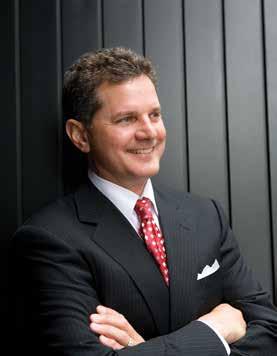
Investing your retirement savings is easy. You can do it yourself. All you need to be successful are a few broad market stock and bond index funds and you’re done. This simple and extremely low-cost strategy will outperform almost all the strategies offered by professional advisers, who charge 1% or more of your portfolio and then underperform the markets.
I know how the system works because I’ve been an adviser for more than 30 years. If you have an adviser who charges you based on the size of your portfolio, odds are very high that your portfolio is far more complicated and more costly than it needs to be, and that you’re underperforming the broad stock and bond markets. If you stop using the adviser, and adopt a simple portfolio that holds only a few index funds, you’ll save a lot of money and your performance will improve.
Rick Ferri, CFA, is the CEO of Ferri Investment Solutions, an as-needed hourly fee investment adviser. He has 30 years of experience in the investment industry as a financial consultant and portfolio manager. Visit www.RickFerri.com for information or listen to his podcast at www.bogleheads.podbean.com.

Complexity is job security in the adviser industry. If a portfolio strategy is complicated, people will think their adviser is smart and savvy, and owns a secret society ring that gives them special knowledge to outperform the markets. That’s not true, of course. What’s going on is marketing, and it’s time you learned that truth.
Show a potential client twenty different funds and talk in industry jargon about optimizations, efficiency, alpha, and factors, and people think this adviser is a whiz-bang genius who has the market nailed. That seems worth paying an average of 1% or more in fees, and this is before the fees of the twenty different funds they put in portfolios.
What adviser is going to show a potential client a simple portfolio of a couple of index funds that track the stock and
market. Slice, dice, glue, charge high fees – it’s a scam.
Complexity sells. Every adviser knows this and that makes complexity your enemy. If you don’t understand precisely what your adviser is talking about, and you don’t understand how much it’s costing you in total fees, then get rid of that adviser and self-manage with a simple portfolio of index funds.
I recommend buying three funds. For US stocks, I like the Vanguard Total Stock Market ETF (VTI – 0.03% fee) or the iShares Core S&P Total U.S. Stock Market ETF (ITOT –0.03% fee). For international stocks, I like Vanguard Total International Stock ETF (VXUS – 0.09% fee) or the iShares Core MSCI Total International Stock ETF (IXUS – 0.10% fee). For bonds, the Vanguard Total Bond Market ETF (BND – 0.035% fee) or you can just create a portfolio of FDIC insured CDs. There are many similar low-cost index funds available from other providers.

bond markets? The potential client would say, “That’s easy. Why do I need you to do this?” It’s true. Anyone can create a simple portfolio that is low-cost and beats the complex portfolios of professional advisers after fees and this is why most advisers don’t recommend simple portfolios.
Advisers make things complicated by slicing and dicing the stock and bonds markets into many different pieces. They will then put those pieces back together again using multiple funds which essentially is a complicated and expensive way to get back to a total market index fund. They’ll do the same thing with international stock markets and the bond
I’m not saying all advisers are money hungry grubs who are making things complicated for the sake of job security. If you want an adviser or need an adviser, find a reasonably priced one who doesn’t make your portfolio complicated and charge you a lot of money for it. The cost of simple investing has come down to almost zero over the past 20 years due to low-fee index funds and the elimination of commission costs at Schwab, Fidelity, Vanguard, TD Ameritrade and other firms. The last bastion of gluttony is adviser fees. The average 1% fee for an adviser is far too high and that needs to come down.
If you search long and hard, you will find a growing number of hourly or fixed-fee advisers that charge reasonable fees to create and manage a simple portfolio that you can understand and self-manage if you want to. Their fee should be aligned with the actual time they spend working on your accounts and managing your money rather than charging 1% or more, regardless of how much effort they put in or how much you make.
Best of luck in 2020.

Dr. Gabriel Rodriguez is a board-certi ed anesthesiologist and fellowship-trained interventional pain physician at The Pain Relief Center and is dedicated to the eradication of pain. The Pain Relief Center is a state-of-the-art facility providing custom pain relief treatments and same-day procedures to give each patient the ultimate experience.
Dr. Rodriguez received his medical degree from the University of Texas Health Science Center in Houston, Texas. Following this, he completed his anesthesia residency at the prestigious Mayo Clinic in Jack- sonville, FL (ranked among the very best pain management programs in the country by U.S.News & World Report) and continued his training in the pain relief fellowship. He is now a Diplomat of the Ameri- can Board of Pain Medicine, as well as a Diplomat of the American Board of Anesthesiology.
Dr. Rodriguez approaches pain management from an individualized perspective and diligently prepares a comprehensive pain treatment plan tailored to each patient’s speci c needs. Dr. Rodriguez understands that not all pain is the same and o ers a complete assessment of your pain as well as frequent reassessments to ensure your pain is well controlled. Most procedures are minimally invasive and provide considerable relief. Dr. Rodriguez believes that no one should live with pain and be limited from having the life they once knew.
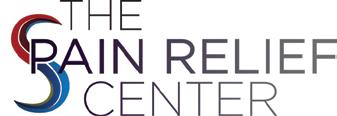



Richardson







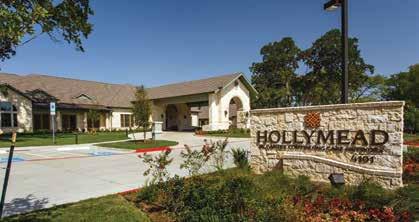









 Noah Silliman/Unsplash
Noah Silliman/Unsplash
Try counting the number of songs written about Happiness or the lack thereof? Scholars and philosophers have spent their lives searching for the Happiness that has eluded mankind for centuries. There is even a Science of Happiness, (No lie. Look it up).
Happiness has been described as an enjoyable or satisfied state. Feelings of joy, appreciation, contentment, and feeling fortunate with one’s situation in life are all indicators of Happiness. Perfect Happiness has been described as enlightenment that comes when you have all your needs satisfied.
Duke University conducted a study to determine the difference between Happy and Unhappy People. This study concluded that if the basic needs of food, shelter, clothing, and safety were met for a sustained period, the state of being Happy or Unhappy was based on an individual’s thinking habits and patterns. Happiness is an ongoing process, not a destination. Hap-
piness requires us to see life from a positive perspective, have a purposeful life, and a healthy spiritual life.
Could the way to Sustainable Happiness be in our thoughts? We all have a million thoughts flying through our minds at any given moment, but we choose the thoughts we dwell on. Grabbing hold of healthy thoughts and memories changes our emotional and physical state, which leads to a peace of mind that can experience joy, appreciation, gratitude, and contentment.
There is no evidence proving wealth contributes to sustainable Happiness, although it does make life easier. Being truly happy is as much about the attitudes within us as the circumstances surrounding us. The following is a list of contributors to a Sustainable Happy and Healthy, Emotional Life:
• Find a Purpose or a cause and contribute to making a difference. People who are focused on their needs or situations score lower on the Happiness Test. Giving is bet-
ter than receiving and being able to elevate something above yourself generates stronger self-worth.
• Cultivate a strong Spiritual Life that promotes love, compassion, thankfulness, loyalty, healthy relationships, and old fashion values. Spiritual life will expand your ability to experience Happiness and Healthy Emotions.
• Live in the Present. Today has possibilities for fun and enjoyable activities. You can easily miss out if you are not in the moment and forever lose the opportunity. Preoccupation with old mistakes and failures leads to depression and emotional stress.
• Resolve to be Involved with the Real World. Although the world of technology is trying hard to replace interpersonal relationships, nothing will replace the need for human-tohuman interaction. Family, friends, church, and social gatherings contribute to a feeling of belonging and purpose.
• Embrace Forgiveness when you are handed a Raw Deal. Let go of resentment and self-pity and replace it with the thoughts of undeserved, unearned forgiveness for others and yourself. It is not an over-exaggeration to say, when you hold onto a grudge or unforgiveness, it is like taking poison and expecting someone else to get sick. Unfor-

giveness is a major factor in unhappiness.
• Don’t Waste Time, energy or resources fighting unrealistic goals or conditions you cannot change. This is not to say give-up or lower your expectations, don’t be so hard on yourself. If you find a big distance between where you are in life and where you want to be, or if the conditions you face today have changed from the time you set your goals, give yourself a break. Give yourself the time to acquire the abilities to reach those goals. If your goals are unrealistic, evaluate and reset your direction based on talents and skill levels you have developed. When tested by life’s conditions or circumstances, give yourself the time needed to learn new skills to adapt to the challenge. Sometimes how we face a situation is more significant than the situation we face.
Why do you want to be happy?
Happiness is good for your heart; it

lowers your blood pressure and heart rate. It improves your immune system
and helps you combat Disease and Disabilities.
1,500 Americans, ages 65 and older, rated how much happiness and enjoyment they felt. After seven years, the participants with more positive emotion ratings were less likely to be frail. The same researchers found that happier elderly people were less likely to have a stroke; this was particularly true for men.
Lowers Stress Levels and allows quicker recovery from stress-related effects. Happy people have fewer aches and pains. Unhappiness causes pain.
Happiness can prolong your life; some studies show it can extend your life by seven to 10 years.
“Change your thoughts and you change your world.”
––Norman Vincent Peale
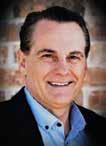
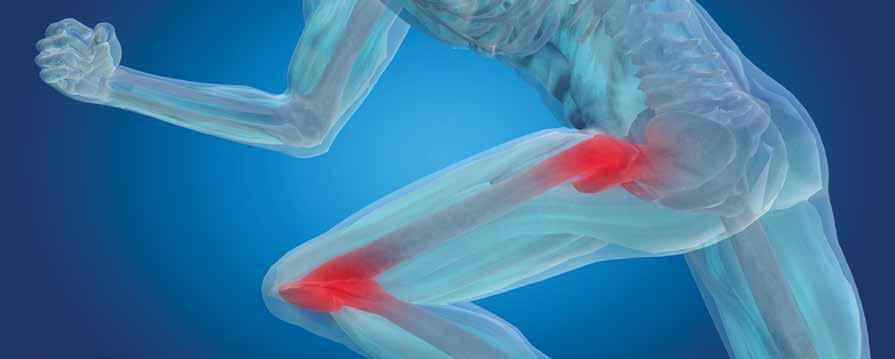
Comprehensive Orthopaedic Care with expertise in:
• Fracture Repair
• Joint Replacement
• Anterior Total Hip Replacement
• Fracture Nonunions/Malunions
• Limb Lengthening
• Periprosthetic Fractures
• Pelvic Fractures
• Upper Extremity Injuries
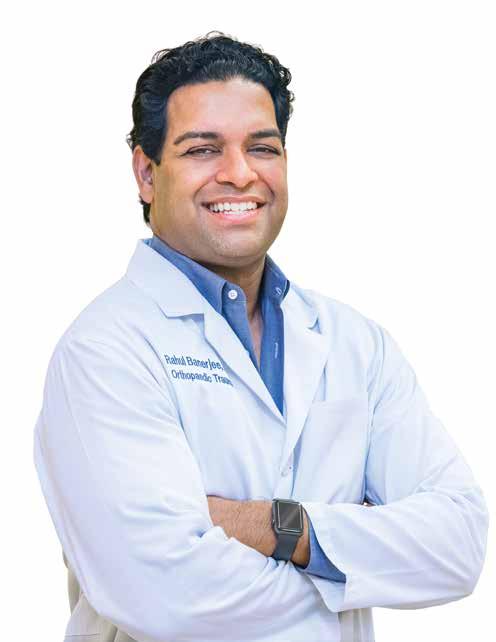
Dr. Rahul Banerjee is a board-certified, fellowship trained orthopaedic surgeon who specializes in comprehensive fracture management, joint replacement (including direct anterior hip replacement), and management of complex orthopaedic problems.
Dr. Banerjee graduated with honors from Brown University and completed medical school at the University of Chicago Pritzker School of Medicine where he was inducted into the Alpha Omega Alpha honors society.
Dr. Banerjee served in the United States Air Force and attained the rank of Major. Dr. Banerjee was assigned to treating injured patients and training orthopaedic residents at the William Beaumont Army Medical Center in El Paso, TX. During his service, he was deployed to the War in Iraq in support of Operation Iraqi Freedom and treated many injured soldiers and civilians.
Dr. Banerjee is the recipient of numerous awards and honors including the Air Force Commendation Medal, the Army Commendation Medal, the Howard Rosen Teaching Award from AO North America. He is an active member of the American Academy of Orthopaedic Surgeons, the Orthopaedic Trauma Association, and the American Orthopaedic Foot and Ankle Society. Dr. Banerjee has authored over 25 peer-reviewed publications and numerous textbook chapters on the treatment of orthopaedic problems.
Dr. Banerjee serves as the Director of Orthopaedic Trauma at Medical City Plano. In 2019, Dr. Banerjee joined Texas Bone and Joint and continues to practice in Plano.

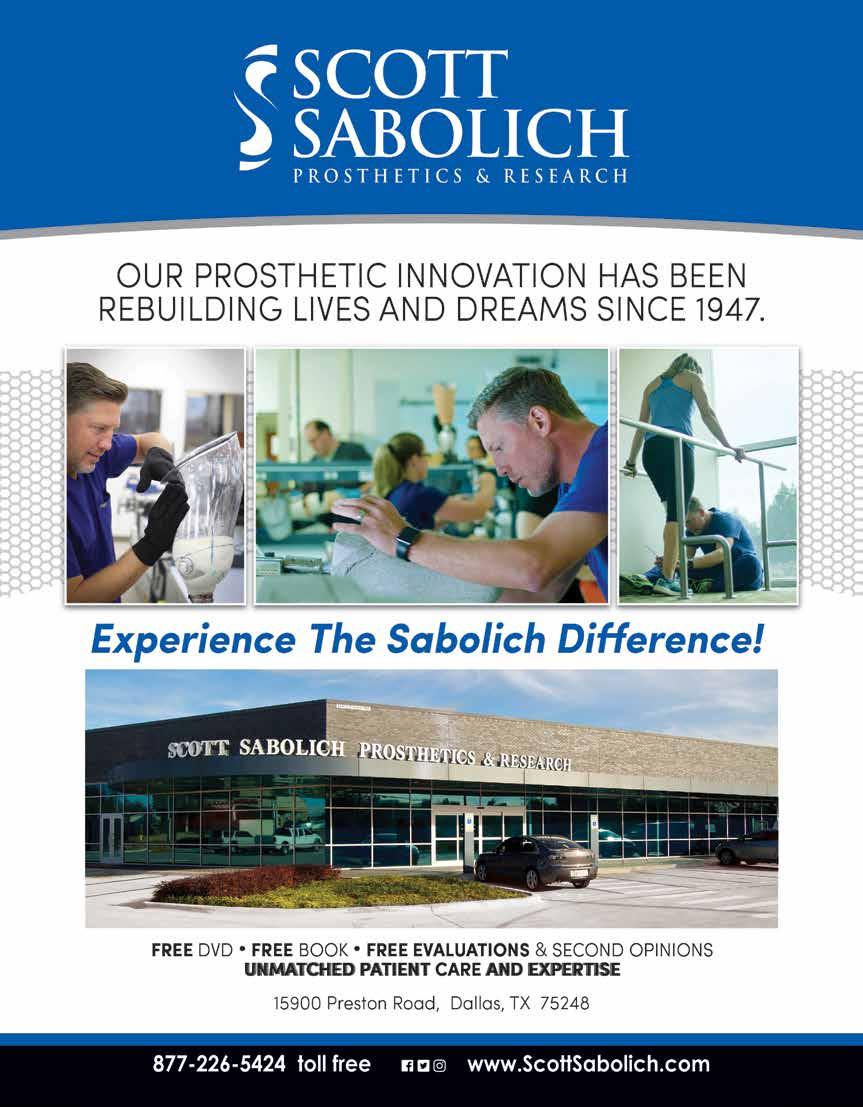



Still in demand, vegetables (veggies) are on the rise and replacing popular carbs such as rice and flour.
Veggies have been trending for some time. As more people avoid refined grains because of their link to inflammation, vegetables have become a nutritious alternative. The addition of gluten in a diet can cause an inflammatory response in the body that is linked to gluten intolerance. Gluten is mostly found in wheat, rye, farro, and barley. Farro, a trendy grain, also has gluten because it is a type of wheat grain.
You’ve heard of veggies such as cabbage and its relatives: cauliflower, Brussels sprouts (making a comeback), and kale. But, do you know why are people turning to them and what makes them popular? Let’s see.
Cabbage: A plant that is usually eaten as a vegetable, it’s a great source of fiber and is rich in antioxidants beta-carotene and vitamin C. You can use it in soups (I personally don’t like soups but a veggie one with cabbage, yes, please!), cut it for coleslaw, and use it to make all sorts of salads. If you slice cabbage, it can be grilled, fried, or steamed. Research needs to continue on its cancer prevention qualities, although there are studies suggesting it can help with prostate and stomach cancer. Be careful of eating too much if you have diabetes because it had been said that cabbage can interfere with blood sugar levels.

Cauliflower: This veggie has become popular because of the keto-eating plan. Low caloric and rich in antioxidants like vitamin C, it also is rich in folate, vitamin K, fiber, and natural compounds that help with oxidative stress. It’s suggested that cauliflower helps with inflammation, premature aging, and prevention of heart disease, cognitive decline, and digestion. Some people with irritable bowel syndrome (IBS) and others without the condition may find it a bit difficult to digest because cauliflower is a FOD-
MAP (fermentable oligosaccharides, disaccharides, monosaccharide, and polyols food). A popular use for cauliflower is to use it as rice. Cooked brown rice can have 210 calories/46 grams of carbs, while a cup of cauliflower rice has 25 calories/5 grams of carbs.
Brussels Sprouts: As the name suggests, this veggie hails from Brussels, Belgium. In the United States, they are mainly grown in New York and California. High in fiber, folate, vita-

min C and K, like its relatives mentioned above, it’s suggested it helps with inflammation, prevention of heart disease, and cancer. Brussels sprouts contain four times more vitamin C than oranges. There are more than 110 varieties of this trendy veggie. Did you know there is an Eat Brussels Sprouts Day? Yes! Every January 31st is a day dedicated to this veggie.
Kale: “America’s superfood sweetheart” since around 2014, this cruciferous veggie had been everywhere. Not only does it help with overall wellbeing but it’s also high in fiber, vitamins K and C, calcium, chlorophyll, potassium, and nitrates.

Note: Like with all cruciferous vegetables, eating too much of them in excess can interfere with medications or bodily functions in many individuals. For example, these vegetables contain thiocyanates, which can affect your body’s ability to absorb iodine. They are also high in vitamin K (helps with blood clotting), which can interfere with blood thinner medications.
Always consult your doctor if you have questions concerning your health before starting a new eating plan or making drastic changes in your eating habits.
Julie Alvira, M.D., MBA Healthcare Management, is the founder of Coach Dr. Julie, LLC - Physician Life and Weight Loss Coaching Services. You can find her on Facebook as Coach Dr. Julie or via email at julie@coachdrjulie.com. www.coachdrjulie.com
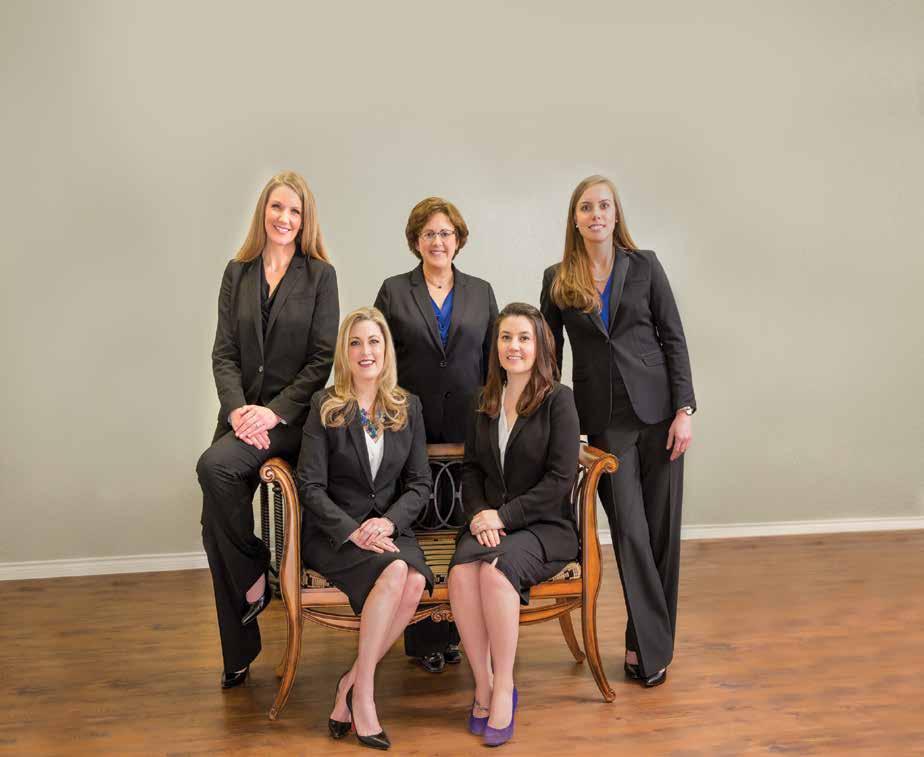





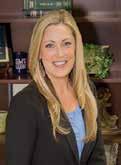






These days, getting old seems to be harder than it used to be. Families live farther apart and aren’t always able to care for each other the way they did in the past. People are living longer, and providing quality care is getting tougher. And, there are many in the “sandwich generation” who are raising children and taking care of parents at the same time. That’s a lot to juggle. Though we can’t reverse the aging process, there are some things we can do to make it a little easier on ourselves and our loved ones.
Fraud Awareness: Fraud on seniors happens more than we like to imagine. We see countless cases where seniors have been manipulated by someone they thought they could trust: a son, a daughter, a family friend, a teller at a bank, or even a caregiver. These people befriended the seniors and then abused their position to exploit them, almost always in ways that were financial or material. Take the time to talk to your loved ones regularly about their lives and daily activities and listen carefully for hints that they are struggling to manage on their own. Remind them not to give out their personal information or bank account numbers over the phone, and that anyone who pressures them for money or asks that they withhold information from family members does not have their best interests at heart. Make yourself available to help and make sure they know you care about their well-being and financial security.
Know Your Health Care Options: It’s never too early to get the facts on your health care coverage and available public benefits. Many people don’t know what private health insurance and Medicare will and will not cover. People are often shocked to find out that Medicare or their health insurance will not pay for long-term skilled nursing, assisted living, or at-home care, all of which can cost several thousands of dollars a month. Some people can get government benefits, such as Medicaid or Veterans’ benefits, but not everyone qualifies for these public
programs. If you have the advantage of time to plan in advance, long-term care insurance, or its equivalent, can make all the difference.
Long-Term Care Planning: Every week, we are asked to help families who are faced with the challenges of Alzheimer’s and other forms of dementia. These situations are difficult for everyone involved. Debilitating illness can become the kind of worst-case scenario that leaves a family in financial ruin due to lost income, medical expenses, and nursing care costs. It’s impossible to plan for every circumstance that could arise in the future, but having your estate planning documents in order as soon as possible will definitely help. Medical and financial powers of attorney allow you to designate agents to assist with medical decisions and financial matters and are the primary way to avoid the need for guardianships.
Guardianships: Sometimes, it becomes clear that a person no longer has the capacity to care for or protect themselves. A judge can appoint a legal guardian for someone who is suffering from dementia or any other disability that impairs judgment and decision-making. The appointed guardian will typically oversee personal affairs and finances. Guardianships can be difficult, but are sometimes necessary to protect a loved one from exploitation by unscrupulous or misguided people. One of the only ways to ensure you have some control in who will be appointed guardian is to sign a Declaration of Guardian while you have capacity. A Declaration of Guardian allows you to choose who you do, or do not, trust to act as your guardian. A little advance planning can make things much easier down the road, and can help prevent heartache and fighting.
Find Trusted Advisors: Whether you’re helping a family member deal with aging or whether you’re facing those challenges yourself, don’t go it alone. Seek qualified professional advice on health care, insurance, legal documents, and financial planning. There are many trust-worthy professionals in our community. Take the time now to build relationships with people you trust to help you plan for your future. You’re doing your family an invaluable service when you complete a plan well before you need it.
Lori Leu, Erin Peirce, Lauren Olson, Laura Chavero, and Zachary Stubblefield are Elder Law attorneys with Leu & Peirce, PLLC located in Plano, Texas. They can be reached at 972-996-2540.


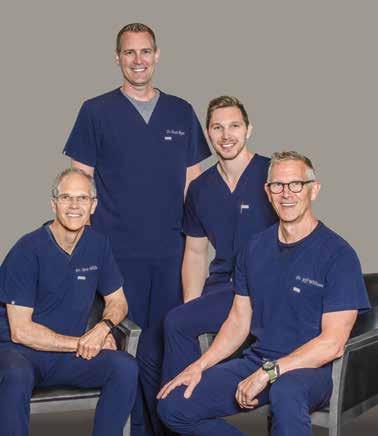


Believe it or not, some folks don’t understand what dental implants are, how they work and why they are so helpful. A dental implant acts just like a real tooth root, maintaining complete stability of the attached tooth or teeth and stimulating the surrounding bone so that the bone maintains its volume. Dental implants are often the most conservative tooth replacement option and can be a better option than complex dental work to try and save a tooth where the tooth is already highly compromised. The actual implant is a small titanium screw that replaces
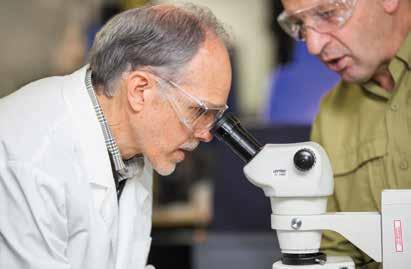
the root of the missing tooth or provides an anchor for a full arch case. After the implant is integrated into the bone, we can place a tooth on top of it and allow you to begin feeling confident again and chewing normally.
Why would anyone want to get dental implants? Something that can help aid you in your decision between a Dental Implant and any other dental procedure is that you will most likely want a solution composed of 5 things: natural looking, comfortable, easy to maintain, healthy for your mouth and a great value. Imagine a smile that is pure, clean and allows you to beam with confidence. Imagine a smile that allows you to brush and floss normally. Imagine a smile that will not require return visits to the dentist to maintain and replace expensive appliances. Dental implants are a great option for each of these ideal solutions.
Gone are the days of teeth flopping around in your mouth! Dental implants can secure most dentures, and that’s life changing. Most of us like being social and the most common thing we do is eat together. That’s reason enough to
make sure your teeth are secure, not to mention being able to eat the food we enjoy. Additionally, a single tooth implant might be used to preserve the surrounding teeth by avoiding a cemented bridge. When we do bridges, we have to treat the teeth on either side of the missing tooth. In trying to restore missing teeth, we would love to keep the others healthy too.
What worries the average person about getting implants? You can be sure almost everyone can benefit from implants. It’s a rare case that we can’t help someone. Maybe it might be between $3,000 for a single tooth and $50,000 for an entire mouth reconstruction. There are affordable ways, including special financing, that could bring the cost down to $56 a month for a single tooth and $390 for one full arch. This is all subject to credit approval and a down payment, but it gives a proper perspective to those who are considering this.
Another possible misconception is that Dental Implants could be painful. Most of the time getting implants is not nearly as uncomfortable as people imagine. There is a lot of planning put into the surgery ahead of time so that the actual procedure is quite simple.
The Allen Dental Center has been performing many dental services for decades, but implants are at the top of the list. We even have the Dallas Implant Institute conducting continuing education classes out of this facility with our doctors as the instructors. In other words, our dentists are getting to teach other dentists how to be successful at placing implants.
Implants can and often last a lifetime. It is important to find a dentist who knows how to help you get the successful results you deserve. Allen Dental Center is offering a free consultation with necessary x rays and are currently looking for certain cases that we can use for teaching classes.
Are Dental Implants right for you? Ask yourself these questions:
• Are you missing one or more teeth and would love to have a complete smile once again?
• Do you currently have any other kinds of tooth replacements such as: dentures, bridges, flippers, etc. that aren’t providing the comfort or convenience you desire?
• Have you or are you experiencing any mouth injuries, decay, gum disease?
• Are you embarrassed about your teeth and your smile?
• Would you love to finally have a healthy, beautiful smile?
If you said yes to one or more of these questions, then you are likely a good candidate for dental implants.
If we can help you in any way, please let us know and schedule your free consultation today! www.allendentist.com

Chiropractors can see anywhere up to 20 to 50 patients a day, the reason varying with each patient.
More than 30 million are seen and treated annually according to Sharecare.com.
People go to the chiropractor for many different reasons, some minor and some more major. Nonetheless, seeing a chiropractor has many benefits, some obvious and quick, and some of those benefits are more long term.
Chiropractors are able to locate issues beneath the surface of the skin and bones that other specialists and doctors are unable to always do. They are specialized in helping assist with pain located in the spine, but also the neck, shoulders, unspecified radiating pain and numbness throughout the body and beyond.
Many times the root of certain pain in the body stems from the spine being
misaligned or out of balance, and when the spine is off balance the central nervous system is affected. Central nervous system issues result in the whole body not being able to function properly, due to the CNS being responsible for housing nerves that are going throughout the body, sending very important messages.
While most primary doctors can rule out serious complications, a chiropractor is able to perform treatments to the body that will help manage the pain, and in many cases completely eradicate the pain.
They specialize in complementing other forms of traditional medicine or they can serve in the place of traditional medicine, as alternative medicine.
Bones, joints, and muscles are all tended to when one takes a visit to the local chiropractor.
A chiropractic adjustment is another term for a spinal adjustment. A spinal
adjustment is an adjustment given to the spine by a chiropractor or trained specialist. In some cases manipulation to the spine is and can also be performed.
There are various methods chiropractors use when performing adjustments.
Though every person, no matter the age, can experience joint or muscle pain, that doesn’t automatically approve each person when it comes to getting chiropractic care. There is a screening that must be done with each new potential patient to rule out any issues that would reveal as to why chiropractic care would be too much for the body.
Various adjustment methods include:
• Instrument adjustments
• Toggle drop
• Table adjustments
• Lumbar roll
• Release work

Instrument adjustments are proven to be one of the more gentle methods. It’s also one of the methods not involving the thrusting of hands targeting the area of pain in the spine.
In some cases manipulation is needed and anesthesia is used. That method is known as Manipulation under Anesthesia. There are also cases where the type of treatment you should receive is recommended, but in more basic cases one can sometimes have a say so as to what they want done.
Every person deals with some form of discomfort or pain within the body, whether young or old, married or single, or parent or non-parent.
If you’ve ever been in an accident, then you understand how pain often sneaks up on you. Typically, it doesn’t appear until after the shock has gone away. The pain doesn’t always show up immediately upon impact, and in some cases it’s not present even when one goes to the hospital.
It’s important to pay attention to the body in those situations. Be aware of any new and sudden onsets of pain that present themselves over time. In those cases, some doctors will recommend you see a chiropractor. If you aren’t recommended to visit one, take it upon yourself to visit a specialist.
Whether neck pain, jaw pain, headaches, strains, back pain, leg pain, etc., a chiropractor can help you find the source of pain and rid your body of it, or help you further get to that point. Seeing a
chiropractor and receiving treatment will help them observe the spine, informing you of whether or not there are any issues causing other parts of your body to function improperly.
The spine is important when it comes to its functioning properly, outside of proper function of the spine, other aspects of the body will suffer.
Chiropractic care has been around for many years with various styles to accompany the form of alternative treatment. The techniques, movements, and pressures vary with each style. Although there are many physical benefits to considering chiropractic adjustments, there are also many health benefits to consider.
There are many benefits that go along with getting chiropractic adjustments that all potential patients should know. Let’s list a few.
Eight benefits to getting a chiropractic adjustment:
• Decreases pain
• Improves nerve system function
• Improves flexibility
• Improves mobility
• Strengthens immune system
• Improves joint health
• Helps reduce stress
• Improves sleep and ability to focus
If you’re low on energy then seeing a chiropractor may benefit you in more ways that you realize. There are many aches and pains that we walk around with never tending to but simply dealing with. Because we deal with the pain for so long we don’t realize how freeing it is to actually get realigned within the body.
Chiropractic adjustments are stimulating to the body and have an affect on the nerves in the spinal cord. When the nerves are adjusted for the better, those nerves are then able to function more freely and properly, leaving the rest of the body to then feel that freedom from lots of those aches and pains that went undiagnosed for so long.
A tense back will keep you from being as flexible as you can. For some who have been in accidents, it’s normal to then deal with stiff joints and achy bones after the fact. That’s where adjustments come in and help those joints, muscles, and bones to get back to their proper functionality.

Jesper Aggergaard/Unsplash
However, after a few weeks of treatment, many times it will be said that chiropractic treatment may not be best for the patient. In many longterm treatment cases, it’s within the six-week mark where changes are generally made evident. Though chiropractic treatment is an amazing source of remedy for many, there are still some who chiropractic care isn’t beneficial for.
Dr. Brent Wells has been a chiropractor for over 20 years and has treated thousands of patients. He founded Better Health Chiropractic & Physical Rehab in Alaska in 1998 and his practice is known to have the best chiropractic care service in Juneau, Alaska. www.betterhealthalaska.com









 Diane S. Litke, MD Diplomate American Board of Orthopaedic Surgery
Diane S. Litke, MD Diplomate American Board of Orthopaedic Surgery
Dr. Litke is a passionate artist, both in her spare time and as an orthopaedic surgeon. At L&W Orthopaedics, she approaches every orthopaedic problem with an eye toward restoration of function and mobility. With a deep knowledge of the inner workings of the body’s most active and important joints, Dr. Litke is able to repair most hip, knee, and shoulder problems, giving her patients the freedom to move again. Assisting her skilled hands, she uses the latest state-of-the-art robotic equipment for accuracy and precision, delivering a powerful combination of experience and technology to all of her patients.
Dr. Litke earned her medical degree at the University of North Carolina Chapel Hill. She went on to complete her orthopaedic residency at the University of South Carolina in Columbia South Carolina. She is certified by the American Board of Orthopaedic Surgery, and is a Fellow of American Academy of Orthopaedic Surgery and a Fellow of the American Association of Hip and Knee Surgeons. Dr. Litke is affiliated with the Methodist Richardson Medical Center, where she is the director of the joint program. When she’s not working, Dr. Litke enjoys photography and ceramics.
Please call 972.498.4791 to schedule an appointment.
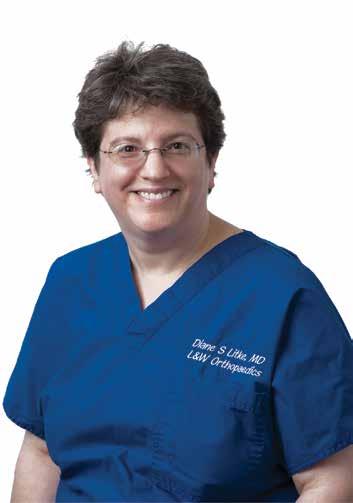



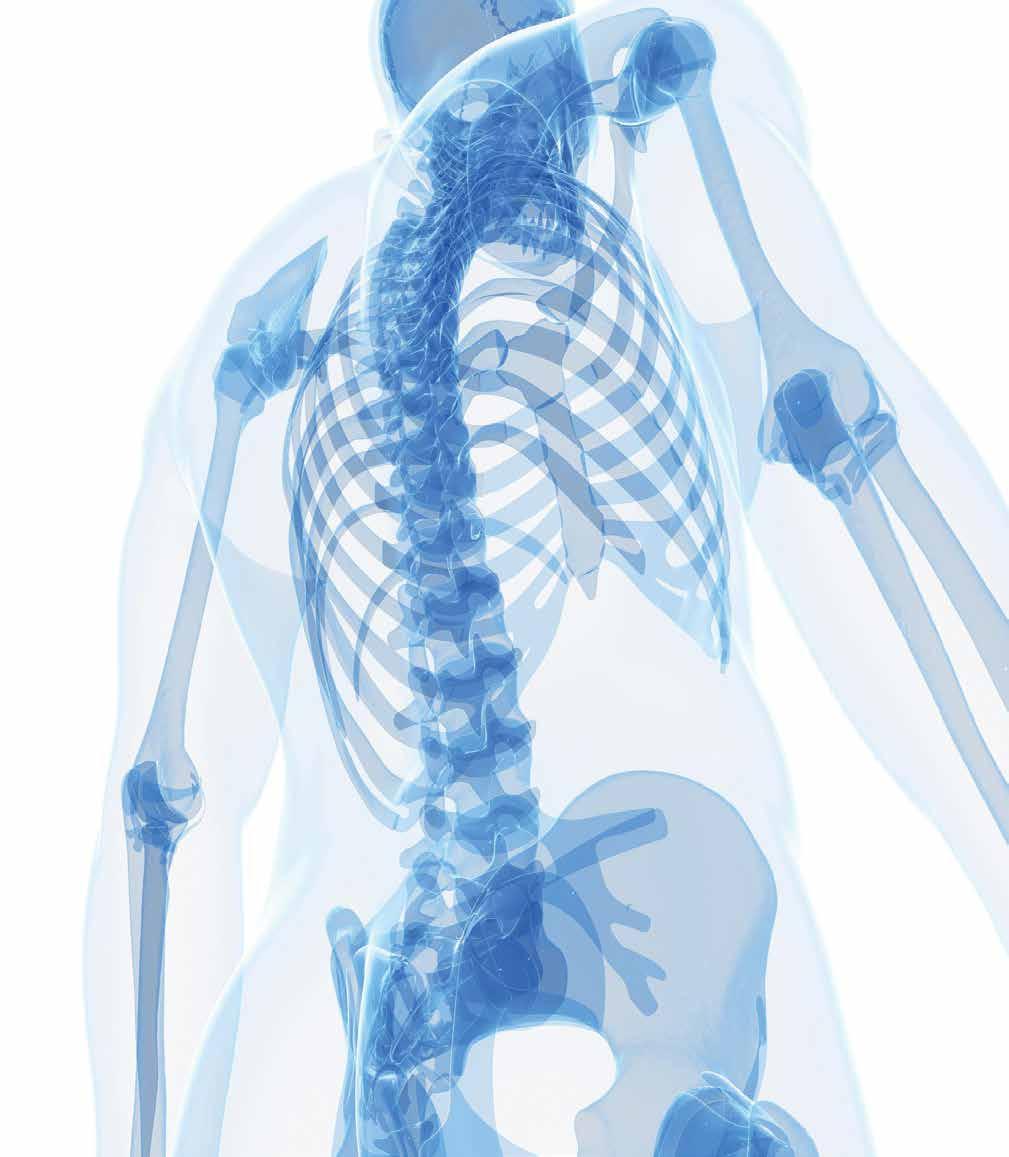


















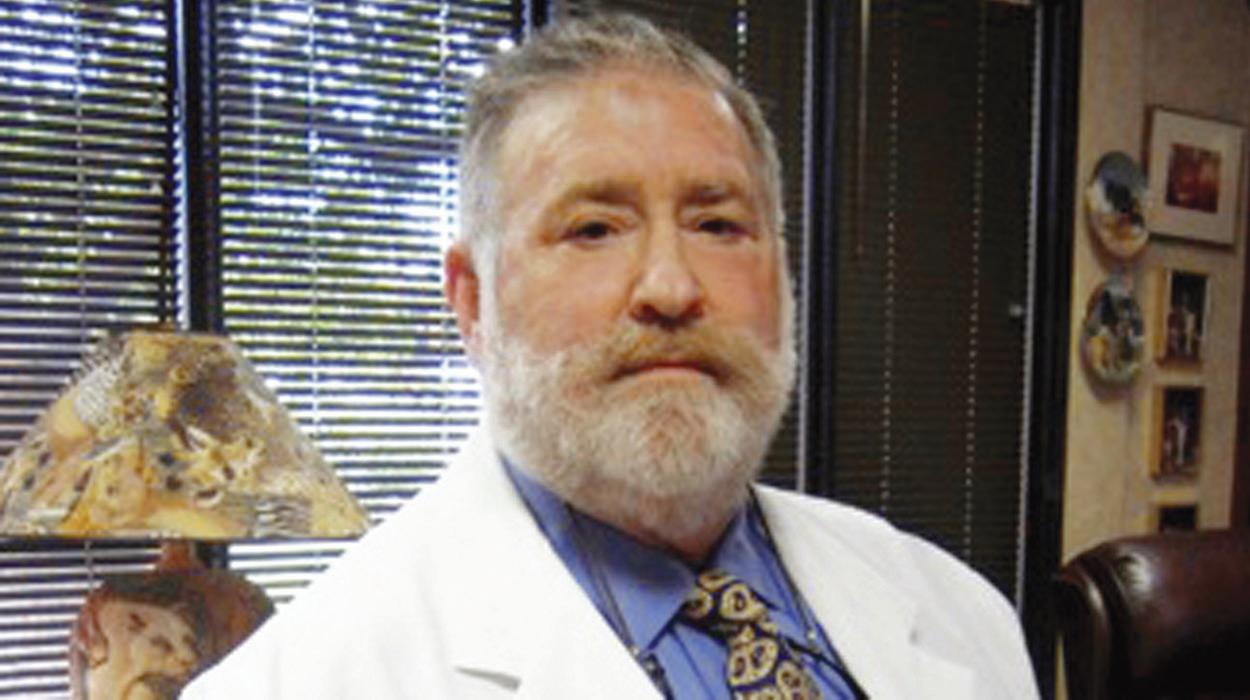









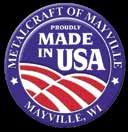



“You may find that your 2nd or 3rd opinion should have been your
“You



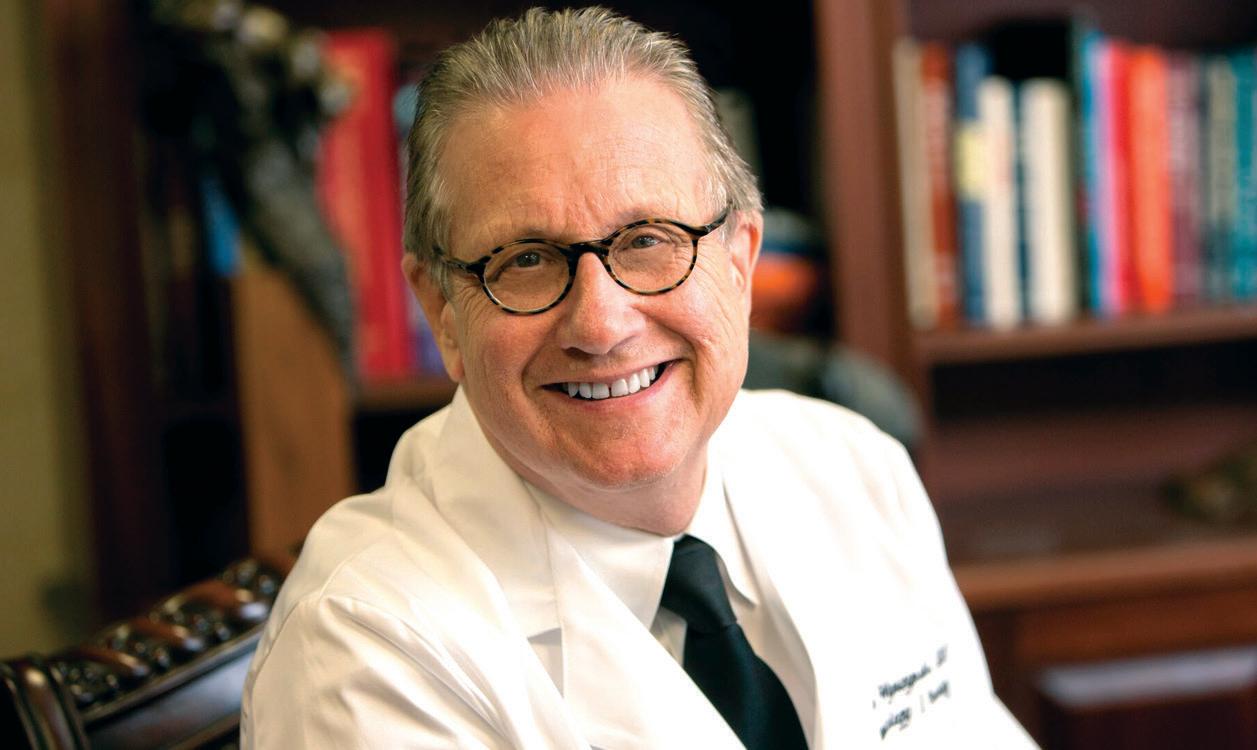
Dr. Birenbaum founded the Arlington Cancer Treatment Center in 1981. He founded the Texas Hematology Center, PA in 1997. He is the founder, Medical Director, and CEO of Patients Comprehensive Cancer Center (2001) & McKinney Regional Cancer Center (2007). Dr. Birenbaum trained at The University of Texas M.D. Anderson Cancer Institute for 5 years, 3 years as a Hematology/Oncology fellow and 2 years as facility professor His private practice in Hematology/ Oncology has been in the Dallas/Fort Worth area since 1979.
Dr. Birenbaum founded the Arlington Cancer Treatment Center in 1981. He founded the Texas Hematology Center, PA in 1997. He is the founder, Medical Director, and CEO of Patients Comprehensive Cancer Center (2001) & McKinney Regional Cancer Center (2007). Dr. Birenbaum trained at The University of Texas M.D. Anderson Cancer Institute for 5 years, 3 years as a Hematology/Oncology fellow and 2 years as facility professor. His private practice in Hematology/ Oncology has been in the Dallas/Fort Worth area since 1979.
AREAS OF CLINICAL INTEREST:
Dr. Wyszynski joins the Texas Hematology and Oncology Centers after many years of successful private medical practice in the Dallas/Fort Worth area. Dr. Wyszynski completed his internship and residency at John F. Kennedy Memorial Hospital in Stanford, New Jersey. He followed these with a number of Fellowships including one in Hematology/Oncology at the prestigious M.D. Anderson Cancer Center in Houston, TX, and two years at Fox Chase Cancer Center in Philadelphia, PA Dr Wysznski is well known for his quality of care and the personal interest he takes in his patients. He is very active in many professional societies and investigative trials
• Gastrointestinal Tumors
AREAS OF CLINICAL INTEREST:
Dr. Wyszynski joins the Texas Hematology and Oncology Centers after many years of successful private medical practice in the Dallas/Fort Worth area. Dr. Wyszynski completed his internship and residency at John F. Kennedy Memorial Hospital in Stanford, New Jersey. He followed these with a number of Fellowships including one in Hematology/Oncology at the prestigious M.D. Anderson Cancer Center in Houston, TX, and two years at Fox Chase Cancer Center in Philadelphia, PA. Dr. Wysznski is well known for his quality of care and the personal interest he takes in his patients. He is very active in many professional societies and investigative trials.
• Melanoma, Sarcoma
• Gastrointestinal Tumors
BOARD CERTIFICATIONS:
• Breast Cancer
• Melanoma, Sarcoma
BOARD CERTIFICATIONS:
• Lymphoma
• Breast Cancer
• Lymphoma
CREDENTIALED AT SEVERAL LOCAL HOSPITALS:
• American Osteopathic Board of Internal Medicine: Hematology/ Oncology-Certified: 8/24/2007
• American Osteopathic Board of Internal Medicine
• American Osteopathic Board of Internal Medicine: Hematology/ Oncology-Certified: 8/24/2007
• American Osteopathic Board of Internal Medicine
PROFESSIONAL SOCIETIES:
• Centennial Medical Center
CREDENTIALED AT SEVERAL LOCAL HOSPITALS:
PROFESSIONAL SOCIETIES:
• American Osteopathic Association
• Medical Center of McKinney
• Centennial Medical Center
• ASCO
• American Osteopathic Association
• Methodist Richardson Medical Center
• Medical Center of McKinney
• Dallas Medical Center
• Methodist Richardson Medical Center
• Specialty Hospital
• Dallas Medical Center
• Kindred Hospital
• Specialty Hospital
• Kindred Hospital
PERSONAL INTERESTS:
PERSONAL INTERESTS:
• Born and raised in Dallas, TX
• Attended SMU (Southern Methodist University)
• Born and raised in Dallas, TX
• Father of 2 sons
• Attended SMU (Southern Methodist University)
• Father of 2 sons
• Owns six dogs
• Loves traveling and golf
• Owns six dogs
• Avid collector of arts and antiques
• Loves traveling and golf
• Avid collector of arts and antiques
Dennis Birenbaum, MD and Dr. Wyszynski, MD, DO are M.D. Anderson trained hematologists/oncologists. Dr Wyszynski, MD, DO also trained at Fox Chase Cancer Center in Philadelphia, PA.
Dennis Birenbaum, MD and Dr. Wyszynski, MD, DO are M.D. Anderson trained hematologists/oncologists.
• ASCO
• Texas Medical Association
• Dallas County Medical Association
• Texas Medical Association
• Dallas County Medical Association
CLINICAL CANCER INVESTIGATIVE TRIALS:
CLINICAL CANCER INVESTIGATIVE TRIALS:
• Central Pennsylvania Oncology Group Protocal
• Eastern Cooperative Group
• Central Pennsylvania Oncology Group Protocal
• Southwest Oncology Group
• Eastern Cooperative Group
• Southwest Oncology Group
PERSONAL INTERESTS:
PERSONAL INTERESTS:
• Married and father of 2 children
• Married and father of 2 children
• Enjoys traveling and spending time with family
• Active in many hobbies
• Enjoys traveling and spending time with family
• Active in many hobbies

Dr. Wyszynski, MD, DO also trained at Fox Chase Cancer Center in Philadelphia, PA. They may be reached at the following location: 469-453-5500

Documentary Photography is not about posing or cute outfits. It’s about preserving family memories for a life time. It’s about family relationships and personalities. It’s about capturing those every day moments that make your family unique. The little details of everyday life are where the love and hard work in a family shows.
A family documentary session is when I come to your house and document your family’s stories as they unfold. The session is not directed or posed; it is just me, observing and documenting blending in as part of the family.
that seem mundane and boring but are done with love and care––the trips to the grocery store, making dinner, kids’ toys, diaper changes, baths and temper tantrums.

Each session I do is unique to each family. We can go to your family’s favorite park, ice cream shop or document your daily routine. Maybe family comes to dinner once a week or close friends come over for game night and you want to remember those events just like they are. Family documentary photography is capturing all the parts of life
As a family documentary photographer, it is my job to allow moments to evolve. Your session will be undirected and unposed. This means that everyone isn’t always going to be happy and joyful. Our session together may also have tears and chaos. All emotions are welcome.
While documenting your family is the biggest part of my job, I also feel you need to have a tangible product to pass on to future generations. Being able to reminisce about what your days were like and reliving the feelings and moments that were captured is priceless.
Create a legacy for your family and schedule a family documentary session today.





